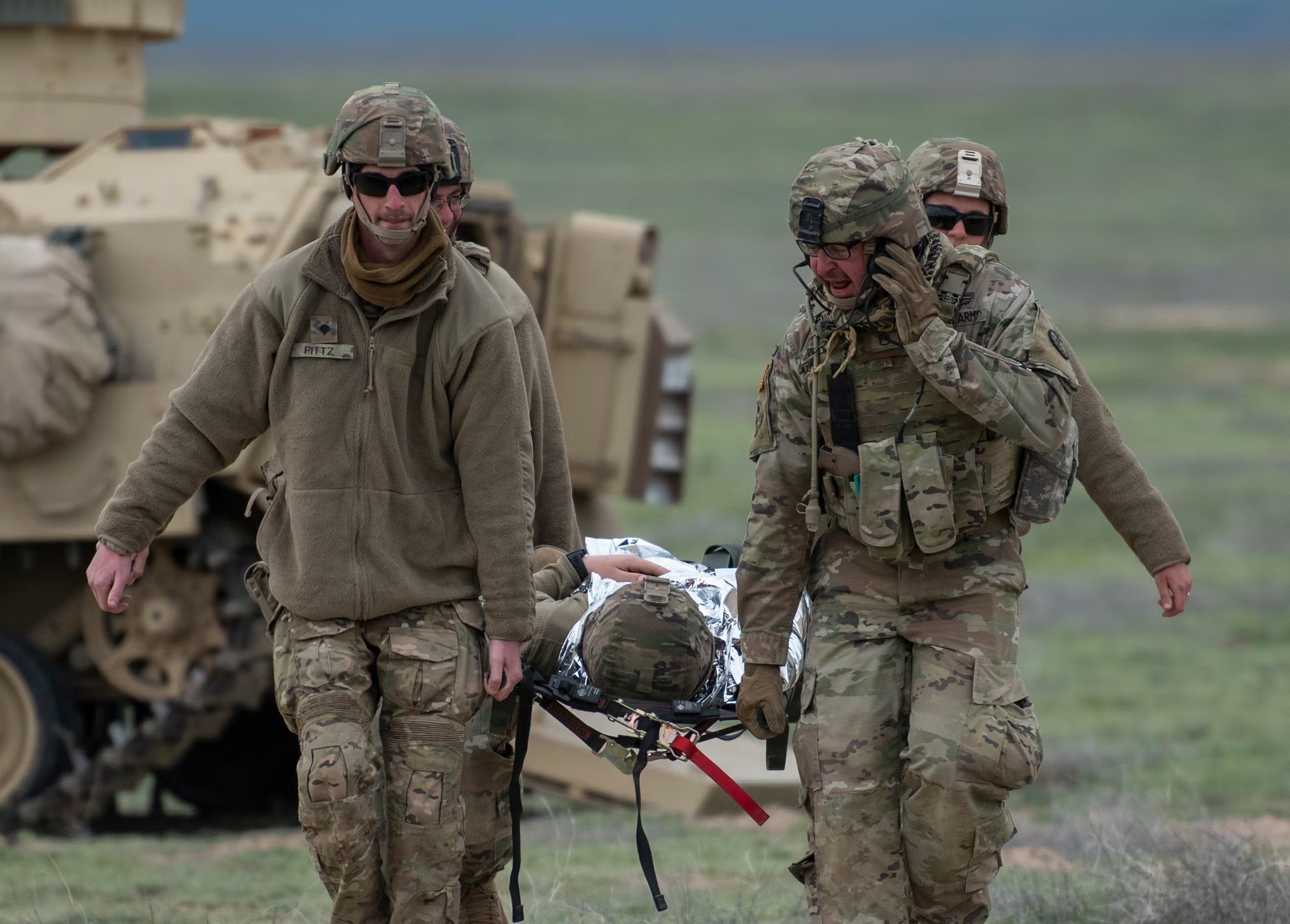Evidence is mounting that veterans are suffering from pulmonary disorders related to deployment to the Middle East, but little is being done to diagnose and treat these illnesses, say researchers who are proposing new guidance for treating affected troops.
Thousands of Iraq and Afghanistan vets have respiratory problems that affect their daily lives, but few of them — or their doctors — know enough about war-related lung conditions to seek care or diagnose a disorder, says Dr. Anthony Szema, an assistant professor at Hofstra North Shore-LIJ School of Medicine and adjunct professor at Stony Brook University in New York.
"Despite the fact we have been doing this research for a handful of years, no one knows about the incidence of lung disease in the military," Szema said.
In an article published online Tuesday in the American Journal of Men's Health, Szema and colleagues argue that deployment-related lung conditions, which they call "Iraq/Afghanistan War-Lung Injury," are found in thousands of troops and veterans, the result of one or more environmental or combat-related factors within the U.S. Central Command area of operations.
Reported symptoms range from wheezing and chronic cough to asthma, low blood oxygen levels and debilitating fatigue related to an inability to take deep breaths.
With so many affected, more research and outreach is needed to make sure former troops are seeking and receiving treatment, researchers say.
"The soldiers don't really know about these conditions or have heard of the VA's burn pit registry, and doctors — even pulmonologists — aren't familiar with these exposures," Szema said.
The researchers examined recent findings from the Veterans Affairs Airborne Hazards and Open Burn Pit Registry as well as information provided by 38 veterans to the advocacy group Burn Pits 360 to gauge the effectiveness of current questionnaires in determining pervasiveness of lung disorders in post-9/11 veterans.
They found that both registries lack questions needed to identify veterans with combat-related lung disorders, pinpoint the causes or determine how many are suffering.
Neither registry "really teases out the nuances of occupational exposure during deployment," Szema said.
As of Dec. 31, 2014, nearly 46,000 veterans had enrolled in the VA's burn pit registry, with about 60 percent completing the associated questionnaire.
According to the data, roughly 14 percent reported respiratory symptoms and nearly 7 percent experienced new onset asthma after deploying to Iraq or Afghanistan.
More than 360 veterans say they have been diagnosed with a rare lung disease — either constrictive bronchiolitis or idiopathic pulmonary fibrosis — not normally found in a young, healthy population.
Burn Pits 360 has more than 2,000 veterans in its database who believe they have illnesses related to exposure to fumes from trash burned in open pits in Iraq and Afghanistan.
But researchers note that other factors besides burn pits may be responsible for lung injury, such as fine particles of metal or bacteria found in the region's soil and inhaled along with dust generated by sandstorms, blasts and the combat environment in general.
In earlier studies, Szema found that a higher number of service members who deployed to the region developed asthma, and he found titanium and other heavy metals in troops' lungs.
Retired Navy Capt. Mark Lyles, a former Navy environmental researcher, found that fine microparticles of dust in Iraq and Kuwait contain metals that have been linked to illnesses such as neurological disorders and cancer, along with more than 140 kinds of bacteria and disease-spreading fungi.
But research into combat-related lung conditions remains controversial. The Defense Department and VA have maintained that the risk of long-term health problems related to exposure to dust and burn pits is relatively low.
And in 2011, the Institute of Medicine, the medical arm of the National Academy of Sciences, found insufficient evidence to determine whether open-air burn pits were directly responsible for the disorders and diseases being reported by some U.S. troops.
However, the IOM did say that particulate matter and metals in Iraq and Afghanistan dust may have contributed to long-term health consequences, but noted that limitations on the available data make it impossible to link the two.
Szema said that because the symptoms of Iraq/Afghanistan War-Lung Injury bear similarities to conditions like asthma and exercise-induced bronchospasms, determining its prevalence among troops has been difficult, and treating it has been even tougher.
Pulmonologists at Vanderbilt University Medical Center and National Jewish Health, a major medical research facility, have found through lung biopsies that at least 50 troops developed constrictive bronchiolitis, a rare disease that affects the smallest passageways of the lungs.
But some physicians have objected to conducting biopsies on affected troops because those kinds of risky invasive procedures provide little information besides a diagnosis, since constrictive bronchiolitis has no cure.
Szema and his colleagues argue that steps can be taken to determine whether a veteran needs a lung biopsy. Their recommendations to physicians and DoD include:
- Track a person's two-mile run time and spirometry readings before and after deployment.
- Conduct allergy testing to rule out allergens or allergy-related asthma.
- Use fractional exhaled nitric oxide tests to determine the extent of airway inflammation.
- Test with impulse oscillometry, where available, to measure pulmonary reactivity and perform specialty stress tests.
Unusual results from one or several of these tests may suggest the need for a biopsy, Szema said.
"Doctors may argue that lung biopsies are too invasive, but it's important for troops to get answers," he said. "It's terrible to be told there's nothing wrong with your lungs, that you are crazy. What happens then — you get sent to a psychiatrist and put on psychotropic meds? How right is that?"
He argued that because since drugs are available for inflammation and clinical trials are underway on novel medications to treat inflamed airways, troops and veterans should be tested and monitored aside from the current protocol, which includes X-rays and spirometry to measure how well lungs function.
"What our paper asserts is the need for a standardized approach for evaluating and treating this disease," Szema said. "There are ways to figure out what is wrong other than 1950s-era technology which aren't subtle enough to test for these problems."
Patricia Kime is a senior writer covering military and veterans health care, medicine and personnel issues.









